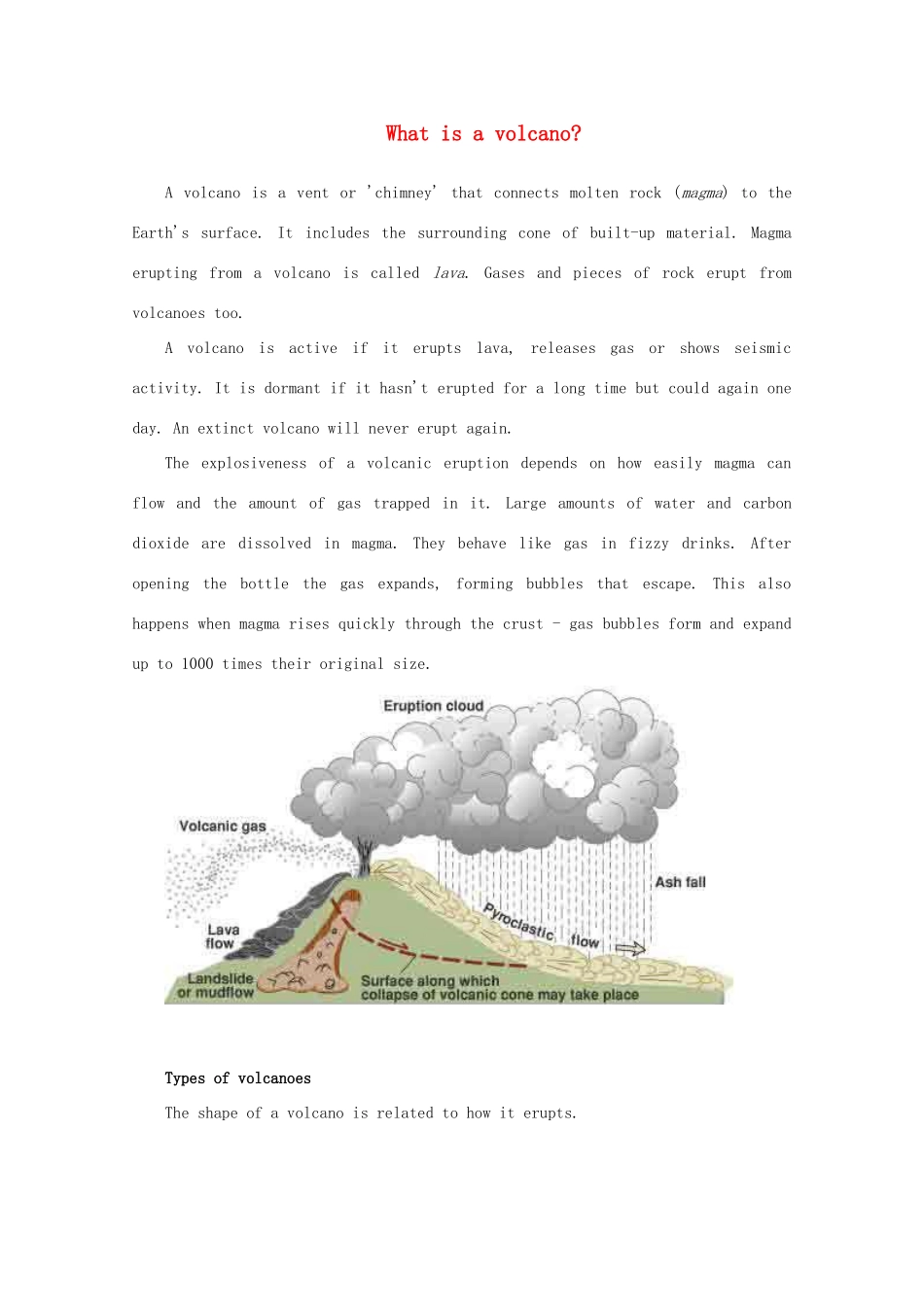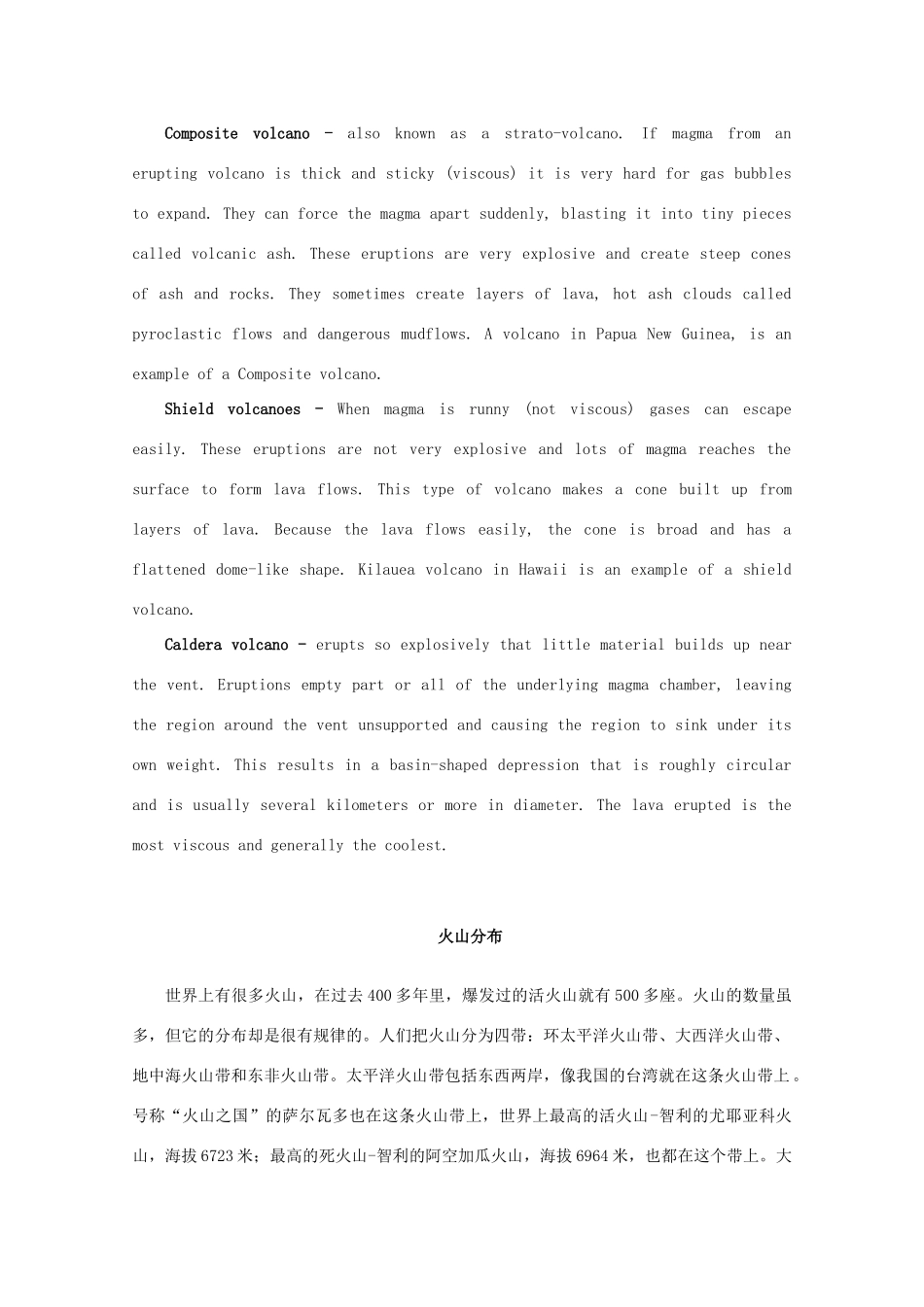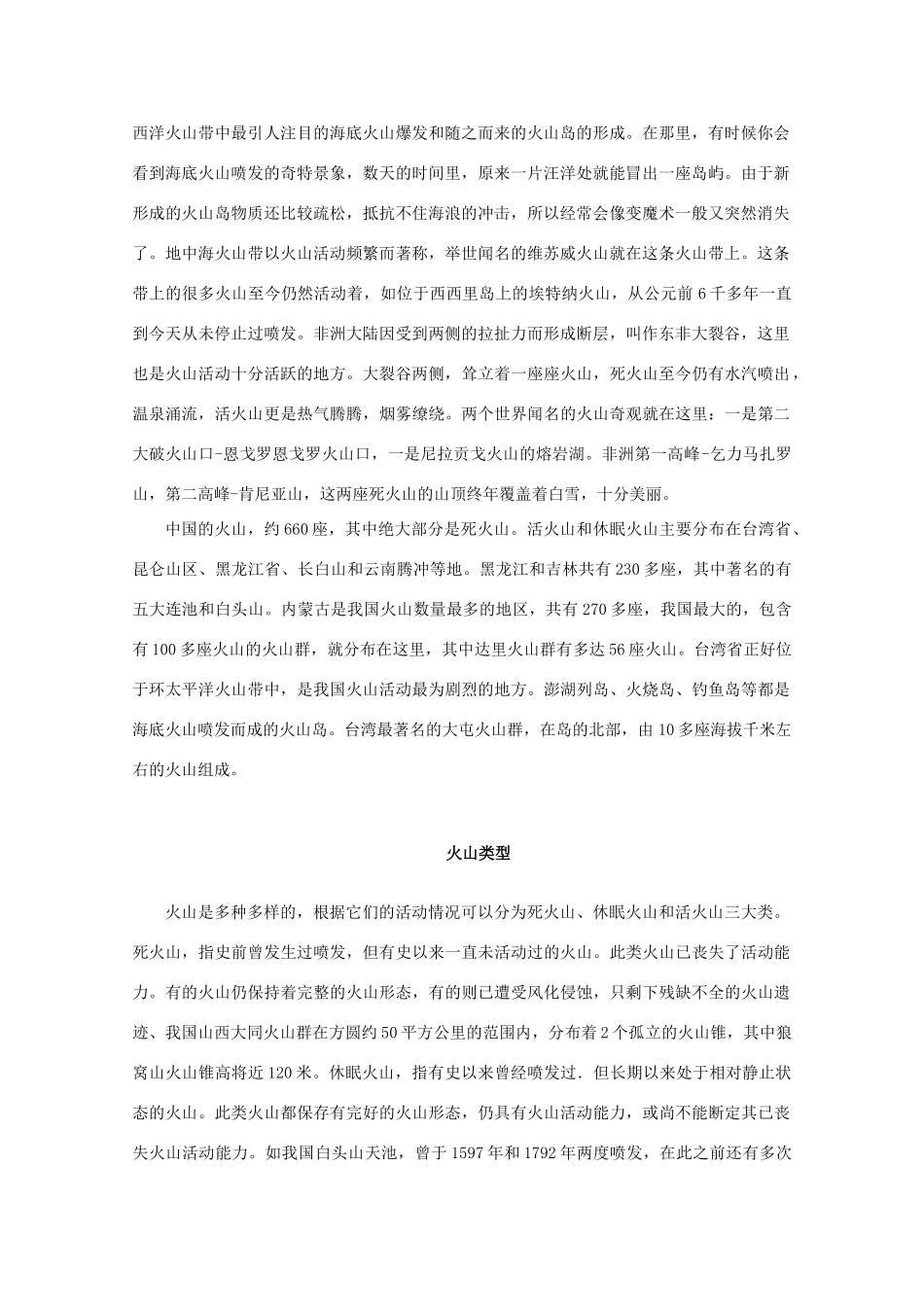What is a volcano?A volcano is a vent or 'chimney' that connects molten rock (magma) to the Earth's surface. It includes the surrounding cone of built-up material. Magma erupting from a volcano is called lava. Gases and pieces of rock erupt from volcanoes too. A volcano is active if it erupts lava, releases gas or shows seismic activity. It is dormant if it hasn't erupted for a long time but could again one day. An extinct volcano will never erupt again.The explosiveness of a volcanic eruption depends on how easily magma can flow and the amount of gas trapped in it. Large amounts of water and carbon dioxide are dissolved in magma. They behave like gas in fizzy drinks. After opening the bottle the gas expands, forming bubbles that escape. This also happens when magma rises quickly through the crust - gas bubbles form and expand up to 1000 times their original size.Types of volcanoesThe shape of a volcano is related to how it erupts. Composite volcano - also known as a strato-volcano. If magma from an erupting volcano is thick and sticky (viscous) it is very hard for gas bubbles to expand. They can force the magma apart suddenly, blasting it into tiny pieces called volcanic ash. These eruptions are very explosive and create steep cones of ash and rocks. They sometimes create layers of lava, hot ash clouds called pyroclastic flows and dangerous mudflows. A volcano in Papua New Guinea, is an example of a Composite volcano.Shield volcanoes - When magma is runny (not viscous) gases can escape easily. These eruptions are not very explosive and lots of magma reaches the surface to form lava flows. This type of volcano makes a cone built up from layers of lava. Because the lava flows...


